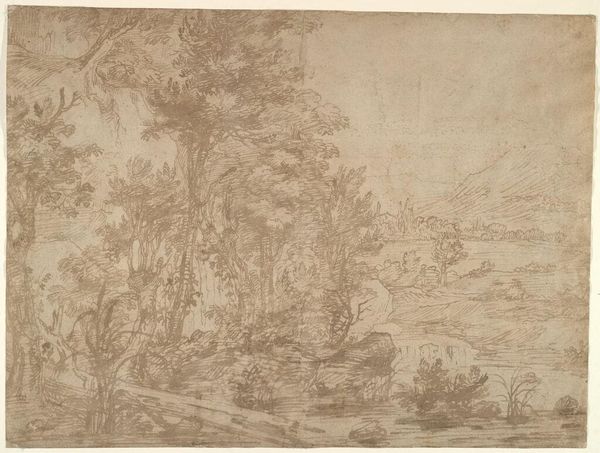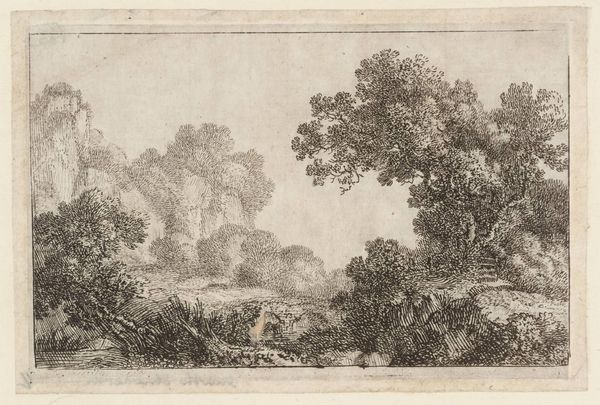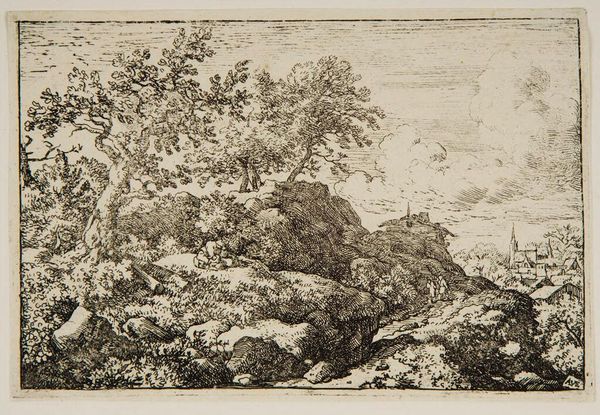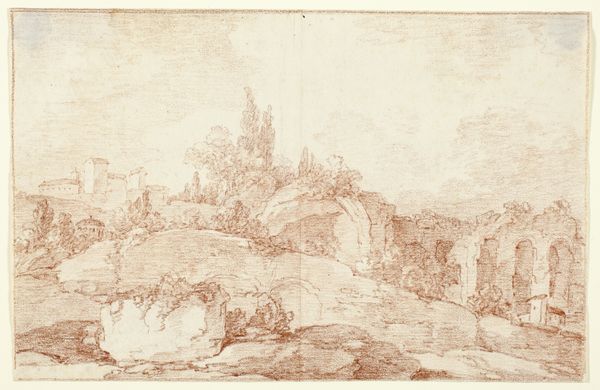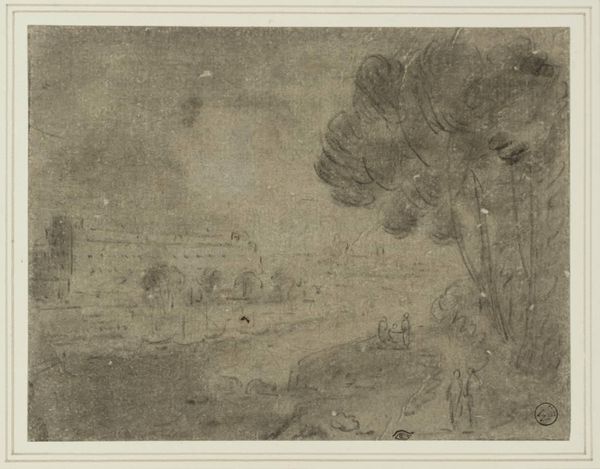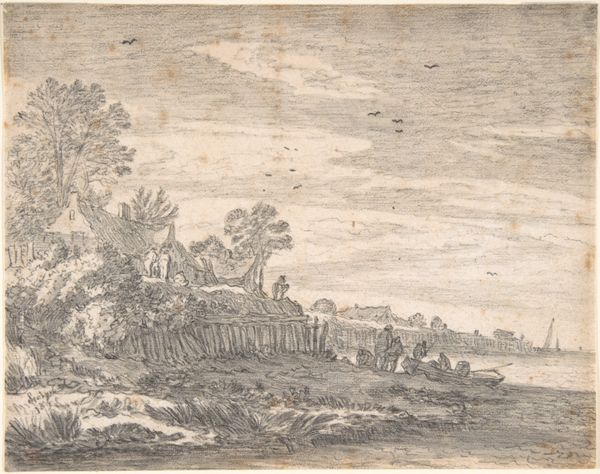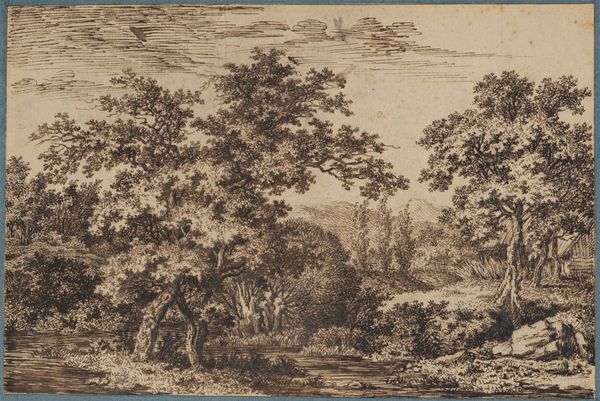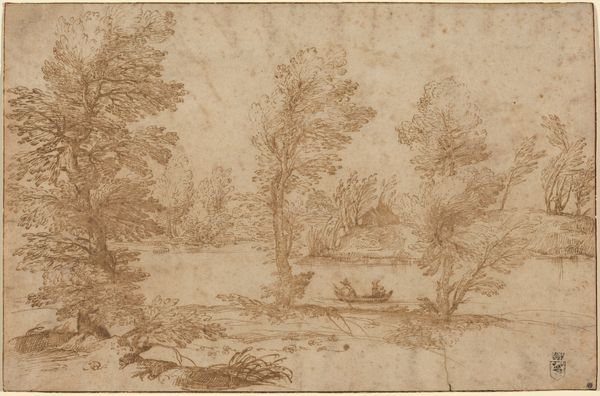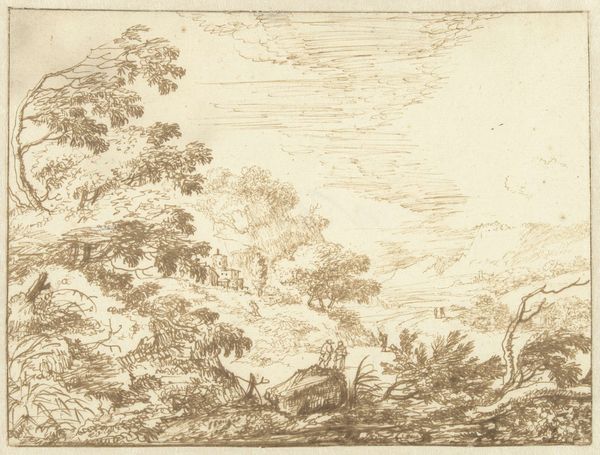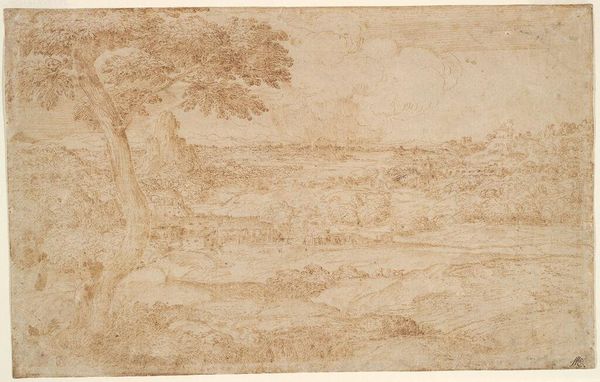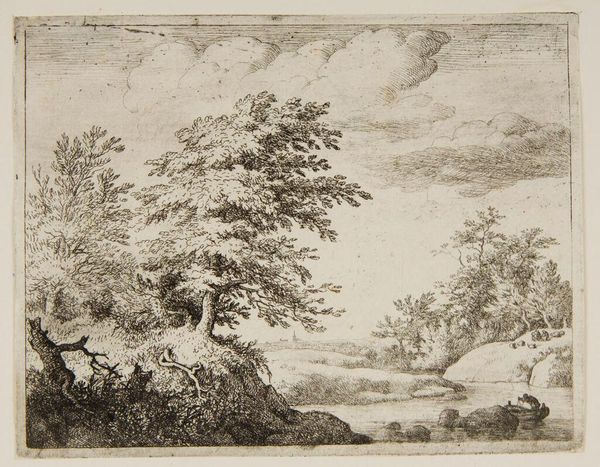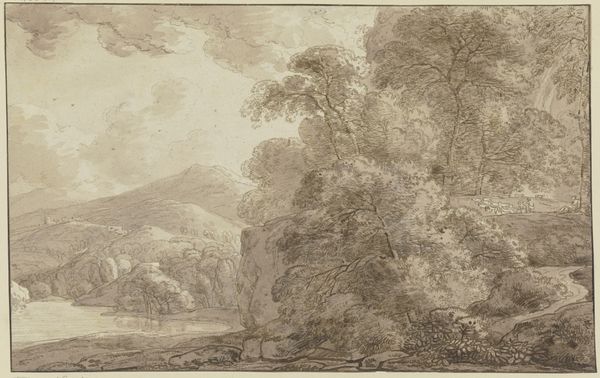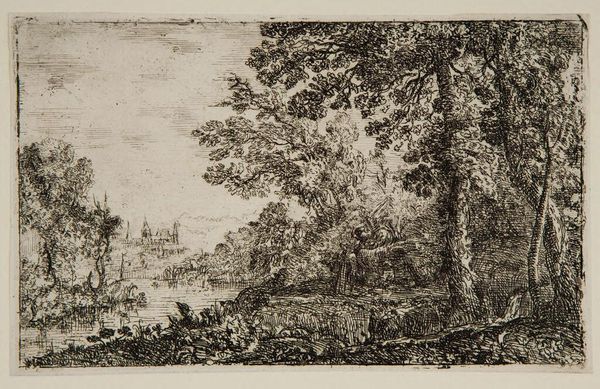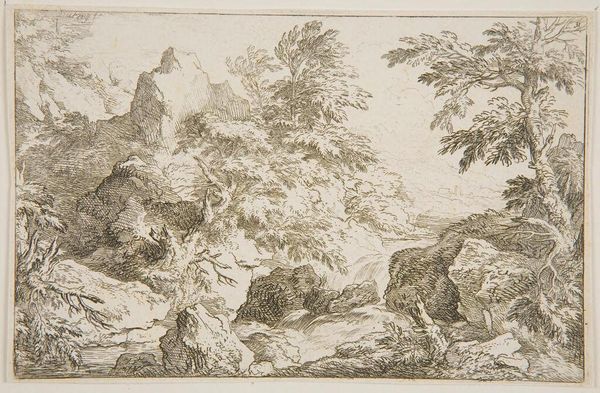
drawing, ink
#
drawing
#
baroque
#
landscape
#
ink
Copyright: Public Domain: Artvee
Curator: Ah, this ink drawing—it’s called "A wooded ridge," believed to have been created by Anthony van Dyck sometime in the 1630s. There's such a vibrant quality, even without color. Editor: It feels like a breath of fresh air caught on paper, doesn’t it? A sort of visual haiku. But I’m struck by how minimal it is. Just ink, presumably readily available. What sort of paper is that? It has those discolorations around the edges from age. Curator: Probably some laid paper, you can sometimes see the wire marks if you look closely enough. This study on paper reminds me of the landscapes Van Dyck was sketching as he traveled through the English countryside. You know, before he became the celebrated portraitist. It makes you wonder, what raw materials did Van Dyck have access to on a regular basis? And where did those pigments come from that he would have needed for painting? Editor: It is curious, isn’t it? Considering all the travel you mentioned, what did it mean for a 17th-century artist to acquire pigments, brushes, paper... Did they carry their own? Did they trade with local craftsmen? This landscape captures something very simple and raw. This image—with that easily portable ink—makes me imagine Van Dyck, traveling light, capturing these immediate moments. The weight and the availability of these supplies, the social and economic dynamics of obtaining and working with those materials, clearly plays a part in how these art pieces manifest themselves, and why. Curator: Absolutely, the simplicity of the materials accentuates the expressive capability. The textures he achieves, solely with line and wash, are pretty evocative—and yes, also point to what's available! There’s an immediate intimacy. Editor: It gives us a glimpse of Van Dyck not just as an artist but as a craftsman making decisions. The choice of ink becomes less about aesthetics and more about access, the practical realities of his travels. It's like reading an artist's notebook, full of experiments of capturing moments in a fleeting form. It highlights the often-overlooked role of labor, skill, material constraints, and socio-economic context in creating art. Curator: Yes, and perhaps the ephemeral nature of the materials invites us to focus on the eternal subject matter – nature, simply observed, rendered beautifully, whatever the access. Editor: An observation which really humanizes this great artist, I think, and renders "A wooded ridge" very charmingly.
Comments
No comments
Be the first to comment and join the conversation on the ultimate creative platform.
